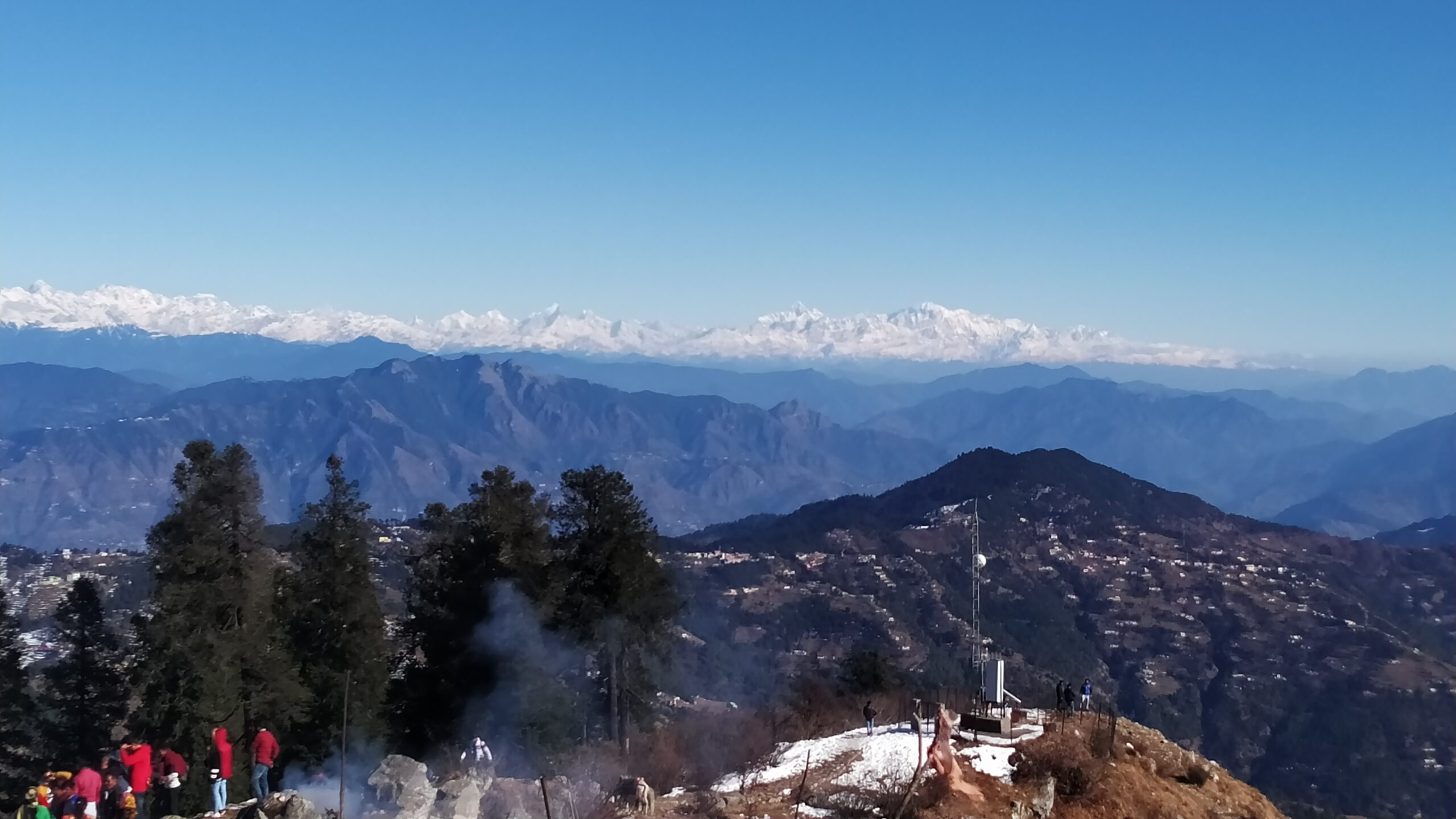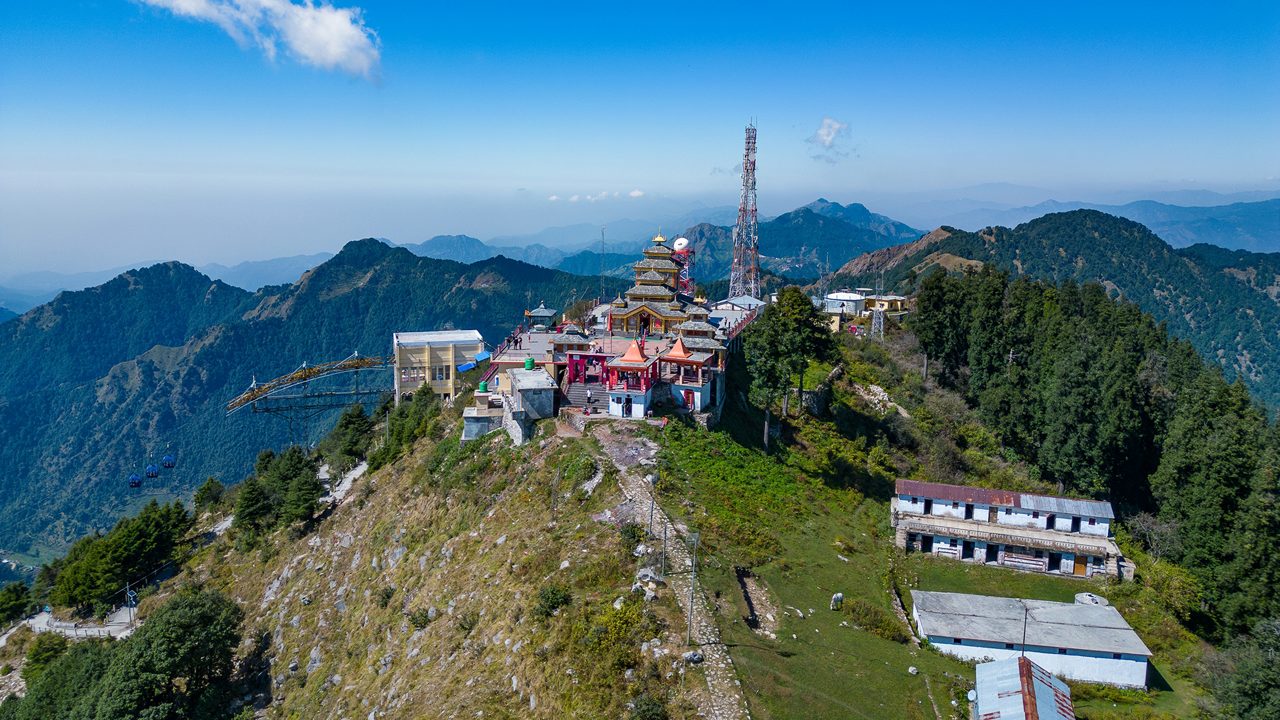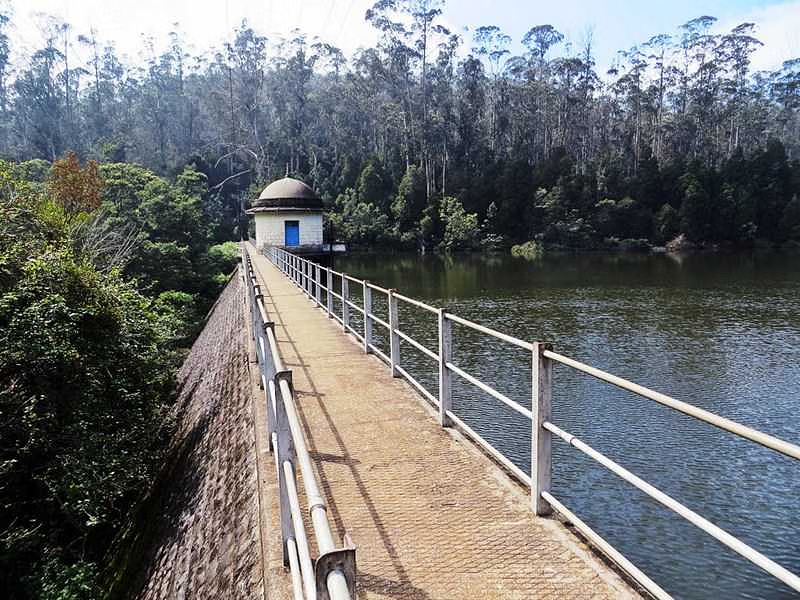Perched at an elevation of 2,750 meters (9,022 feet) in the scenic Garhwal Himalayas near Mussoorie, Surkanda Devi Temple stands as one of Uttarakhand’s most revered Shakti Peetha temples. Understanding the best time to visit Surkanda Devi temple becomes crucial for experiencing this sacred shrine’s spiritual magnificence while navigating seasonal challenges including weather variations, trekking conditions, and accessibility factors. Poor timing can result in dangerous weather conditions, closed temple access, or missed opportunities to witness the temple’s divine atmosphere at its peak.
The temple’s significance as a powerful Devi shrine attracts thousands of devotees annually, especially during the Ganga Dussehra festival celebrated between May and June when spiritual energy reaches extraordinary levels. However, the surkanda devi trek of 2.5 kilometers from Kaddukhal through dense Rounsli tree forests requires careful weather consideration and physical preparation to ensure safe passage and meaningful darshan. Strategic timing ensures your pilgrimage combines comfortable weather conditions with optimal spiritual experiences while avoiding the challenges of extreme winter conditions or monsoon-related accessibility issues.
Table of Contents
Quick Reference Guide: Optimal Times for Surkanda Devi Visit
| Category | Optimal Choice | Temperature Range | Trek Condition | Best For |
|---|---|---|---|---|
| Best Season | Post-Monsoon (Sep-Nov) | 10°C to 25°C | Excellent trails | Clear mountain views |
| Best Month | October | 12°C to 22°C | Perfect conditions | First-time visitors |
| Festival Priority | Ganga Dussehra (May-Jun) | 15°C to 25°C | Good conditions | Devotees seeking blessings |
| Avoid Period | Monsoon (Jun-Aug) | 15°C to 25°C | Dangerous paths | Weather-sensitive travelers |
| Trekking Weather | Mar-May & Sep-Nov | 5°C to 25°C | Good visibility | Adventure seekers |
Understanding these patterns helps you navigate the temple’s mountainous environment while maximizing both spiritual fulfillment and safety during your Himalayan pilgrimage experience.
Best Seasons to Visit Surkanda Devi Temple
Seasonal selection dramatically impacts every aspect of your Surkanda Devi experience, from basic trail safety to spiritual comfort and photographic opportunities. The temple’s high-altitude location creates distinct weather patterns that directly affect trekking conditions, temple accessibility, and overall pilgrimage quality. Each season offers unique advantages and specific challenges that can determine whether your journey becomes an inspiring spiritual experience or a difficult ordeal requiring careful preparation and timing coordination.
Post-Monsoon (September-November): Peak Pilgrimage Season
Post-monsoon period represents the best time to visit Surkanda Devi temple for most pilgrims seeking optimal conditions and spiritual experiences.
September:
- Temperature: 8°C to 20°C (comfortable trekking weather)
- Trek Conditions: Trails cleared of monsoon debris, excellent visibility
- Spiritual Atmosphere: Post-monsoon freshness enhances temple serenity
- Pros: Clear Himalayan views, comfortable temperatures, stable weather
- Cons: Occasional late monsoon showers, trail maintenance ongoing
- Ideal for: Photography enthusiasts, spiritual seekers, moderate fitness levels
October:
- Temperature: 12°C to 22°C (perfect comfort range)
- Trek Conditions: Excellent trail conditions with maximum visibility
- Spiritual Atmosphere: Navratri celebrations create powerful divine energy
- Pros: Crystal clear mountain panoramas, ideal trekking weather, festival energy
- Cons: Higher crowds during Navratri, advance accommodation booking required
- Ideal for: First-time visitors, festival participation, family groups
November:
- Temperature: 5°C to 18°C (crisp mountain air)
- Trek Conditions: Clear trails before winter snow begins
- Spiritual Atmosphere: Peaceful temple environment, fewer crowds
- Pros: Excellent visibility, comfortable daytime temperatures, serene atmosphere
- Cons: Early morning and evening cold requires warm clothing
- Ideal for: Peaceful meditation, photography, experienced trekkers
Spring Season (March-May): Comfortable Exploration
Spring provides excellent weather conditions for comfortable temple visits and extended exploration of surrounding areas.
March-April:
- Temperature: 8°C to 20°C (pleasant hiking conditions)
- Trek Conditions: Winter snow melting, improving trail access
- Spiritual Atmosphere: Temple reopening after winter, renewed energy
- Pros: Comfortable temperatures, blooming rhododendrons, extending daylight
- Cons: Some trails may have snow patches, variable weather conditions
- Ideal for: Nature lovers, moderate trekkers, temple photography
May:
- Temperature: 12°C to 25°C (warmest pre-monsoon period)
- Trek Conditions: Excellent accessibility before monsoon arrival
- Spiritual Atmosphere: Ganga Dussehra festival celebrations attract numerous pilgrims
- Pros: Warm comfortable weather, extended exploration time, festival energy
- Cons: Pre-monsoon heat buildup, increased crowds during festival
- Ideal for: Festival participants, warm weather preference, cultural immersion
June:
- Temperature: 15°C to 25°C (comfortable but transitional)
- Trek Conditions: Good conditions before monsoon intensifies
- Spiritual Atmosphere: Ganga Dussehra festival continuation, high spiritual energy
- Pros: Pleasant weather, blooming flowers and indigenous herbs
- Cons: Monsoon onset possible, occasional fog covering temple
- Ideal for: Festival devotees, nature enthusiasts, botanical interests
Winter Season (December-February): Challenging but Serene
Winter brings significant challenges but offers unique spiritual experiences for dedicated and well-prepared pilgrims.
December-February:
- Temperature: -5°C to 12°C (severe cold conditions)
- Trek Conditions: Snow-covered trails, challenging accessibility
- Spiritual Atmosphere: Profound solitude, intense spiritual focus
- Pros: Pristine snow landscapes, complete solitude, deep spiritual immersion
- Cons: Extreme cold, difficult trek, limited local services
- Suitable only for: Experienced mountain trekkers, extreme weather preparation
Monsoon Season (June-August): Avoid for Safety
Monsoon period presents significant safety risks and accessibility challenges that make temple visits inadvisable.
June-August:
- Temperature: 15°C to 25°C (moderate but deceptive)
- Trek Conditions: Dangerous slippery trails, landslide risks, poor visibility
- Spiritual Atmosphere: Temple operations may be limited
- Pros: Lush green surroundings, moderate temperatures
- Cons: Dangerous trekking conditions, landslide risks, frequent trail closures
- Not recommended for: Any visitors due to safety concerns
For pilgrims interested in similar Himalayan temple experiences with expert guidance, Uttarakhand pilgrimage packages offer comprehensive spiritual journeys covering multiple sacred sites in the Garhwal region.
How to Reach Surkanda Devi Temple

Understanding how to reach Surkanda Devi temple helps you coordinate arrival timing with optimal weather windows and trekking conditions. The temple’s location near Mussoorie provides multiple access routes, but each requires careful planning to align with seasonal accessibility and local transportation schedules. Weather conditions significantly impact road conditions and trek safety, making timing coordination essential for successful pilgrimage completion without unnecessary risks or delays.
**Route Options and Transportation
Multiple access routes provide flexibility for reaching the temple, with timing coordination essential for optimal road conditions and local transport availability.
Primary Access Route via Mussoorie:
- Delhi to Mussoorie: 290 km (6-7 hours by road)
- Mussoorie to Kaddukhal: 8 km via Mussoorie-Chamba road (20 minutes by taxi/bus)
- Kaddukhal to Temple: 2.5 km steep trek (1-2 hours depending on fitness)
- Total journey time: 8-10 hours from Delhi including trek
Alternative Route via Dhanolti:
- Mussoorie to Dhanolti: 25 km (45 minutes)
- Dhanolti to Kaddukhal: 8 km connecting road
- Benefits: Less crowded route, scenic drive through hill stations
Direct Route via Tehri:
- Distance from Tehri: 41 km to Kaddukhal
- Via Narendra Nagar: 61 km alternative route
- Benefits: Direct access for visitors from Tehri region
Transportation Timing Considerations
Road conditions vary significantly by season, affecting travel safety and comfort levels throughout the year.
By Air:
- Jolly Grant Airport, Dehradun: 94 km from Surkanda (nearest airport)
- Travel time: 2.5-3 hours by taxi from airport to Kaddukhal
- Connectivity: Regular flights from Delhi, Mumbai, Bangalore
- Ground transport: Prepaid taxis and cabs readily available at airport
By Train:
- Dehradun Railway Station: 66 km from Surkanda (nearest major station)
- Travel time: 1.5-2 hours by road to Kaddukhal
- Connectivity: Well-connected with major cities, Delhi being primary hub
- Onward transport: Taxis, buses, and shared vehicles available from station
By Road:
- From Delhi: 290 km via Mussoorie (6-7 hours)
- From Haridwar: 145 km via Mussoorie (4-5 hours)
- From Rishikesh: 120 km via Mussoorie (3.5-4 hours)
- Local connectivity: Regular buses and taxis from major Garhwal cities
Seasonal Road Conditions:
- Spring/Post-monsoon: Excellent road conditions with reliable connectivity
- Winter: Possible snow on higher elevations, chains may be required
- Monsoon: Landslide risks, frequent road blockages, not recommended
- Peak season: Traffic congestion near Mussoorie, early departure advisable
Surkanda Devi Trek and Trail Information

The surkanda devi trek offers a moderately challenging mountain experience that rewards pilgrims with stunning Himalayan views and spiritual fulfillment. Trail conditions vary dramatically by season, requiring specific preparation and timing considerations for safe completion. Understanding trek difficulty, seasonal variations, and preparation requirements helps pilgrims choose optimal visiting times while ensuring adequate physical and mental readiness for the mountain temple experience.
Trek Details and Difficulty
Trail specifications help determine appropriate timing based on personal fitness levels and weather tolerance.
Trek Overview:
- Distance: 2.5 kilometers from Kaddukhal
- Duration: 1-2 hours (depending on fitness and weather)
- Difficulty Level: Moderate to challenging (steep ascent through dense forest)
- Elevation Gain: Approximately 500 meters of ascent
- Trail Type: Forest path through dense Rounsli trees, often covered with fog
- Scenic Features: Commands beautiful views of Dehradun, Rishikesh, Chandrabadni, Pratapnagar, and Chakrata
Seasonal Trek Conditions:
- Spring (Mar-May): Clear paths, moderate difficulty, comfortable temperatures
- Post-monsoon (Sep-Nov): Excellent conditions, best visibility, ideal weather
- Winter (Dec-Feb): Snow-covered, significantly more challenging, requires experience
- Monsoon (Jun-Aug): Dangerous, slippery, not recommended for safety reasons
Trek Preparation and Safety
Proper preparation ensures safe and enjoyable completion of the mountain trek experience.
Essential Gear:
- Footwear: Sturdy trekking shoes with good grip for mountain terrain
- Clothing: Layered clothing for temperature variations during trek
- Safety items: First aid kit, flashlight, whistle for emergencies
- Weather protection: Rain gear during transitional seasons, warm clothing for cold weather
Physical Preparation:
- Fitness requirement: Basic cardio fitness sufficient for moderate difficulty
- Acclimatization: Not required due to moderate elevation gain
- Age considerations: Suitable for ages 12-70 with reasonable fitness
- Group trekking: Recommended for safety and shared experience
For devotees seeking similar mountain temple treks with professional guidance, Vaishno Devi pilgrimage tours offer comparable Himalayan spiritual experiences with expert trek support and safety measures.
Surkanda Devi Temple Timings and Rituals
Understanding surkanda devi temple timings helps pilgrims plan meaningful participation in daily rituals and special ceremonies throughout the year. The temple follows traditional Hindu worship schedules with specific timings that vary slightly by season due to daylight availability and weather conditions. Coordinating your visit with ritual timings enhances spiritual experience while ensuring adequate time for trek completion and return journey during favorable weather windows.
Daily Temple Schedule
Regular worship timings provide structure for planning meaningful spiritual participation throughout your pilgrimage visit.
| Time | Ritual/Activity | Description | Best Season |
|---|---|---|---|
| 6:00 AM | Morning Prayers | Temple opens, first aarti of the day | All seasons |
| 8:00 AM | Mangal Aarti | Main morning ceremony with offerings | Spring/Post-monsoon |
| 12:00 PM | Midday Darshan | General worship period, peak visitor time | All seasons |
| 4:00 PM | Afternoon Prayers | Special prayers and offerings | All seasons |
| 6:00 PM | Evening Aarti | Main evening ceremony with lamps | Mar-Nov (daylight) |
| 8:00 PM | Final Prayers | Temple closing preparations | Summer months only |
Seasonal Timing Variations:
- Winter months: Earlier closure (6:00 PM) due to extreme cold and darkness
- Summer months: Extended hours with later evening aarti timing
- Festival periods: Special extended hours during Navratri and major celebrations
- Weather dependency: Timings may adjust based on severe weather conditions
Special Festival Celebrations
Major festival periods create unique spiritual atmospheres but require advance planning due to increased crowds.
Ganga Dussehra Celebrations (May-June):
- Duration: Major festival period attracting thousands of pilgrims annually
- Special activities: Extended worship ceremonies, cultural programs, traditional celebrations
- Crowd impact: Significantly higher pilgrim numbers requiring early arrival and advance planning
- Accommodation: Limited local facilities, advance booking essential during festival
- Spiritual significance: Most powerful spiritual energy and divine blessings during this period
- Natural beauty: Temple surrounded by blooming flowers and herbs during festival season
Other Important Festivals:
- Maha Shivaratri: Special night-long celebrations
- Diwali period: Extended celebration with light decorations
- Full moon days: Monthly special prayers and offerings
- Local festivals: Regional celebrations throughout the year
Surkanda Devi Temple History and Spiritual Significance
Surkanda devi temple history spans centuries of spiritual tradition and mythological significance, enhancing appreciation for optimal pilgrimage timing and cultural preparation. This sacred Surkanda mata temple represents one of the 51 Shakti Peethas where parts of Goddess Sati’s body fell during Lord Shiva’s cosmic dance of grief. Understanding the temple’s historical context and spiritual importance helps pilgrims choose meaningful visiting times that align with traditional celebrations and periods of heightened divine energy.
Historical Background and Mythology
Ancient origins and mythological significance provide context for the temple’s enduring spiritual power throughout centuries.
Shakti Peetha Significance:
- Divine connection: Sacred site where Goddess Sati’s head fell during Shiva’s tandava dance
- Mythological importance: One of 51 Shakti Peethas across the Indian subcontinent
- Name origin: “Sirkhanda” (head piece) evolved to “Surkanda” over time
- Spiritual power: Considered highly powerful for wish fulfillment and divine blessings
- Historical timeline: Ancient worship traditions established after the mythological event
Architectural and Cultural Heritage:
- Forest setting: Temple situated among dense Rounsli trees creating mystical atmosphere
- Natural beauty: Surrounded by flowers of varied kinds and colors, indigenous herbs
- Wildlife habitat: Home to beautiful birds of the western Himalayas
- Panoramic views: Commands stunning views of Dehradun, Rishikesh, Chandrabadni, Pratapnagar, and Chakrata
- Weather phenomenon: Frequently covered with fog throughout the year, adding to mystical appeal
For comprehensive information about the temple’s cultural significance and current pilgrimage guidelines, visit the official Tehri district page and the Incredible India portal.
Spiritual Practices and Benefits
Traditional spiritual practices and believed benefits attract pilgrims seeking specific divine blessings and spiritual advancement.
Common Pilgrimage Purposes:
- Wish fulfillment: Devotees seeking blessing for important life decisions
- Spiritual advancement: Meditation and spiritual practice in powerful divine presence
- Health and healing: Traditional belief in Devi’s healing powers
- Family blessings: Prayers for family harmony, children, and prosperity
- Protection: Seeking divine protection from negative influences
Recommended Spiritual Practices:
- Pre-dawn meditation: Early morning temple visits for peaceful spiritual connection
- Mantra chanting: Traditional Devi mantras and prayers during trek and temple visit
- Offering rituals: Traditional offerings of flowers, fruits, and sacred items
- Circumambulation: Walking around temple premises for spiritual merit
For travelers seeking comprehensive spiritual journeys combining multiple sacred sites, India tour packages offer expertly planned pilgrimage circuits that include Uttarakhand’s major temples with optimal timing and cultural guidance.
Planning Your Surkanda Devi Pilgrimage
Effective pilgrimage planning ensures you experience the best time to visit Surkanda Devi temple while managing the unique challenges of mountain temple access and seasonal weather variations. Comprehensive planning addresses transportation coordination, accommodation arrangements, trek preparation, and weather contingencies to create meaningful spiritual experiences without unnecessary risks or discomfort. Strategic preparation helps pilgrims focus on spiritual objectives rather than logistical challenges during their Himalayan temple journey.
Optimal Visit Duration and Itinerary
Different visit lengths cater to varying spiritual objectives, physical capabilities, and time constraints for successful temple experiences.
Day Trip Option (8-10 hours):
- Early morning departure: 5:00 AM from Delhi/Dehradun
- Travel to Kaddukhal: Reach trek starting point by 12:00 PM
- Temple visit: 2-3 hours including trek and darshan
- Return journey: Evening return to base location
- Best for: Time-constrained pilgrims, day-trip preferences
Weekend Pilgrimage (2-3 days):
- Day 1: Travel to Mussoorie, acclimatization, local sightseeing
- Day 2: Early morning trek to temple, extended worship time, return
- Day 3: Return journey or additional local exploration
- Best for: Comprehensive spiritual experience, comfortable pace
Extended Spiritual Retreat (4-7 days):
- Days 1-2: Gradual travel with stops at other Uttarakhand temples
- Days 3-4: Surkanda Devi temple visit with extended meditation time
- Days 5-7: Additional spiritual sites or retreat activities
- Best for: Serious spiritual seekers, comprehensive pilgrimage circuits
Weather-Based Planning Strategies
Seasonal considerations influence all aspects of pilgrimage planning from transportation to accommodation and spiritual activities.
Peak Season Planning (September-November):
- Advance booking: Reserve accommodation and transportation 2-3 weeks ahead
- Flexible scheduling: Include buffer days for weather-related delays
- Early arrival: Plan early morning treks to avoid afternoon crowds
- Festival coordination: Align visit with Navratri for enhanced spiritual experience
Off-Season Considerations (December-February):
- Extreme weather preparation: Specialized cold weather gear and experience required
- Local condition checking: Verify trail conditions and temple accessibility
- Emergency preparedness: Enhanced safety measures for winter mountain conditions
- Limited services: Reduced local transportation and accommodation options
For devotees planning similar high-altitude temple visits with professional support, Tirupati pilgrimage packages provide well-organized spiritual journeys with expert crowd management and optimal timing coordination.
Health and Safety Considerations
Mountain pilgrimage requires specific health preparation and safety awareness for successful completion without complications.
Physical Preparation:
- Basic fitness requirement: Moderate cardio fitness for 3 km mountain trek
- Age considerations: Generally suitable for ages 12-70 with reasonable health
- Medical consultation: Advisable for elderly pilgrims or those with health conditions
- Fitness building: Light hiking practice recommended 2-3 weeks before visit
Safety Protocols:
- Weather monitoring: Check local weather conditions before departure
- Group travel: Recommended for safety and shared spiritual experience
- Emergency contacts: Keep local emergency numbers and medical facility information
- Communication: Inform family/friends of detailed itinerary and expected return
Essential Preparations:
- Insurance coverage: Travel insurance including trekking activities
- Medical kit: Basic first aid supplies for minor trek-related issues
- Emergency supplies: Extra water, energy food, warm clothing layers
- Local guidance: Engage experienced local guides for weather and trail conditions
Conclusion
The best time to visit Surkanda Devi temple combines optimal weather conditions with spiritual significance for meaningful Himalayan pilgrimage experiences. October emerges as the ideal month, offering perfect temperatures, excellent trek conditions, and the powerful spiritual energy of Navratri celebrations. September through November provides the optimal seasonal window for most pilgrims, balancing comfortable weather, safe trekking conditions, and clear mountain views. Essential planning includes appropriate trekking gear, weather monitoring, and understanding surkanda devi temple timings for meaningful ritual participation during your sacred mountain journey.
You can visit us at VDP Travels, Neighbourhood Complex, F- 5, near SBI Bank, Sector 4, Nerul, Navi Mumbai, Mumbai, Maharashtra 400706. For comprehensive Surkanda Devi pilgrimage packages with expert trek guidance, optimal weather timing, and complete spiritual journey planning, call +91 99675 18405, or visit https://vdp-travels.com.
Best Time to Visit Surkanda Devi Temple – FAQs
What is the best time to visit Surkanda Devi temple?
October offers ideal conditions with perfect weather (12-22°C), excellent trek conditions, and Navratri celebrations. September through November provides the best overall seasonal window.
How to reach Surkanda Devi temple from Delhi?
Travel Delhi to Mussoorie (290 km, 6-7 hours), then Mussoorie to Kaddukhal (25 km, 1 hour), followed by a 3 km trek (1-2 hours) to reach the temple.
What is the Surkanda Devi trek difficulty level?
The trek is moderate difficulty with 3 km distance and 1,000 feet elevation gain. Average fitness levels can complete it in 1-2 hours with proper preparation.
What are the Surkanda Devi temple timings?
Temple opens at 6:00 AM with morning aarti at 8:00 AM. Evening aarti occurs at 6:00 PM (varies by season). Winter months have earlier closure due to cold weather.
What is the Surkanda Devi temple history?
This ancient Shakti Peetha temple is over 1,000 years old, where Goddess Sati’s head is believed to have fallen. It’s one of 51 sacred Shakti Peetha temples in India.
Is the Surkanda Devi trek safe during monsoon?
No, monsoon season (June-August) presents dangerous conditions with slippery trails, landslide risks, and poor visibility. Visits are not recommended during this period.
What should I pack for Surkanda Mata temple visit?
Pack sturdy trekking shoes, layered warm clothing, rain protection, first aid kit, flashlight, water, and energy snacks for the mountain trek and temple visit.
Can elderly people visit Surkanda Devi temple?
Yes, elderly people with reasonable fitness can visit during optimal weather months (September-November) with proper preparation, appropriate gear, and possibly guide assistance.
What is special about Navratri at Surkanda Devi temple?
Navratri (October) brings 9 days of intensive celebrations with extended aarti ceremonies, cultural programs, and the most powerful spiritual energy throughout the year.
How long does the complete Surkanda Devi pilgrimage take?
Day trips take 8-10 hours from Delhi including travel and trek. Weekend pilgrimages (2-3 days) allow comfortable pace with Mussoorie stay and extended temple time.





